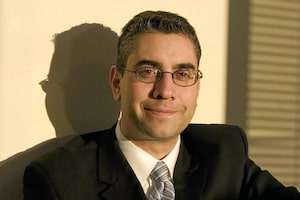If you are 40 years old, your investment portfolio is likely made up of 60 per cent stocks and 40 per cent bonds. This strategy is based on the idea that the bond portion of your portfolio should equal your age. But is this smart?
If you own a life-cycle fund, this is pretty much how you invest. It assumes that since you are 40, your portfolio should have roughly 60 per cent stocks.
The basic premise makes sense. Stocks outperform bonds, but are more volatile. As you get older, your time horizon shortens and you want more stability.
As my friend and former colleague Jay Kembhavi pointed out to me, this is a classic rule of thumb that doesn't make sense for many people.
Here is the problem - everyone is different. Below are six examples of when the age-equals-bond-weighting strategy might be a poor one:
1) What does the rest of your financial world look like? If you are going to have a defined benefit pension plan and government pensions that cover most of your expenses each month - then your personal investment account should probably be much more aggressive, regardless of your age.
2) What are bond yields? Where are interest rates going? If you are 80 years old, apparently you should have 80 per cent of your portfolio in bonds (or preferred shares or cash). I would suggest that now is a poor point in the cycle to be so overweight bonds - as they offer very low yields and carry interest rate risk. Perhaps 50 per cent might be better, and the stocks can be overweight in utilities.
3) Who is actually going to use the money? We work with many older clients who will likely never use half their portfolio. We can be very conservative with the "needed" part of the portfolio, but why do so with the other funds? Those assets are earmarked for their kids. Even if the client is 75, it is the children's appropriate asset mix that should apply to part of the portfolio.
4) How much risk do you need to take? If someone is 50 years old and trying to play catch up on their financial plan, they can earn more, spend less, and/or take a more aggressive growth strategy with existing assets. In such a case, the person might need to take more investment risk than 50 per cent stocks. On the other hand, a 60 year old might be in a great financial position, and not want to worry about investment markets. They might be able to use annuities and low-growth, low-risk investments and be just fine. No need to have 40 per cent stock exposure.
5) What if I don't want to generate taxable investment income? Maybe my goal is pure growth. What if owning GICs, government bonds and cash is the least tax-efficient investment for me? If I am 75, should I only hold 25 per cent in stocks? Should I have 75 per cent in preferred shares?
6) Are you likely going to be around at age 95 or does your health suggest that you may not make it past 65? While we don't know when we will die, our personal health and genes can give us some clues. Clearly a 60 year old in great health might have a different portfolio than one who is battling a terminal illness.
As we head toward a new year, I would like to leave you with my personal financial wish:
Make 2011 be the year about you - not about the average person, the rule of thumb or the way it is supposed to be done. Make it about your goals, your plans for your children, your worries about your parents, your income, your health, your investments, your career. It all adds up to a unique set of circumstances that deserves specialized attention. Don't be lumped into a "life cycle" investing strategy. Make your financial life your own. Either manage it yourself or work with a professional who will develop and deliver financial solutions built for you.
Follow us on Twitter: @globemoney
 Ted Rechtshaffen
Ted Rechtshaffen